Peter had two seven hour trips to Boston over the last two weeks. One was for his CAIR visit, which went well, and then the other was an admission for an illness. At the CAIR visit, we established that Peter gained four pounds in two months and were able to decrease his TPN by 15% per night. This is good news in terms of the health of his GI tract, as the weight was gained by what he has been taking in by mouth and G-tube. During that same trip, Dr. Kamin scoped Peter's fistula and established that it is chyle that is leaking from the bowel. A follow up test in nuclear medicine shows that the chyle leak is contained just to the intestine that is connected to the fistula, and that there is not a leak in the "good" parts of his intestine. Dr. Jennings has therefore stated that Peter should come back soon for surgery to remove the intestine that is connected to the fistula. I realize most people would not be happy to hear that their child has to go for intestinal surgery. Peter is losing 1200 mL of fluid a day (from the fistula!) and has to get weekly labs to try to maintain sodium and fluid balance, so surgery sounds like less risk than trying to maintain things as they currently are. We are at a standstill with increasing enteral feeds because the intestine attached to the fistula only increases in output as the feeds go up.
At that same visit we had Peter's face, neck, ears, and chest lasered to remove the telangectasia spots and spider veins that have emerged over the years. Peter was the first patient at Children's Hospital Boston to have a laser treatment done in the OR. The dermatologist was telling us that they have wanted to get the OR equipped to handle the laser for some time, but it has been a slow process. In fact, when we first talked about doing this back in March at his Vascular Anomalies Clinic visit, the OR still wasn't equipped to handle the laser (electrical needs, I believe). There were some kinks in getting the laser to the hospital from the satellite clinic so that Peter could get lasered, and then another problem in communication as to which OR rooms were equipped to handle the laser. As such, Peter's scope and accompanying laser were delayed for six hours. Dr. Kamin was very kind to continue to postpone the scope until the laser arrived. After the procedure I was very worried that we had made a mistake in doing the laser, as the lasered areas truly were a dark purple afterwards and casued more heads to turn that the original spider veins and telangectasia did. However, two-and-a-half weeks later, we are very glad with the results and feel that it was a good move after all.
CAIR was Thursday, the scope was Friday, nuclear medicine was all day Monday and Tuesday morning, and then we drove home. Wednesday night Peter spiked a temperature, ultimately reaching the dreaded number 100.5, which means cultures need to be drawn to be sure that there is no line infection. A line infection can quickly lead to sepsis, so I called Boston Thursday morning. By late Thursday morning, Peter was acting mostly better, and in the late afternoon he went for a brisk walk with me and came home and jumped on his little trampoline. It seemed all was well, minus a decrease in hunger and some bloating of the abdomen. However, his CBC came back with a white count of 0.4 and platelets of 37. The plan was to redraw the labs the next morning and hope that the CBC numbers were erroneous. Thursday night the fever returned and hit 101.7. There was an even bigger pit in my stomach then. He was fussy when he woke up and actually put himself back to bed. Another call to Boston and another set of cultures and CBC drawn. We talked with Dr. Kamin and made a plan to head up to Boston with the possibility of the CBC still being the same, and the understanding that if it was good, we'd just return home and wait out the return of the blood cultures. As we got closer to Boston, Dr. Kamin called and told us to just head to the ER and plan to be admitted because the numbers were still the same. Concerns ranged from a simple virus, to a bloodstream infection or line infection, to peritonitis, to chyle now leaking into the abdominal cavity post the scope. After admission, he never did spike another fever, but he slept a lot, his belly remained big, his hunger and thirst were way down, and his white count went down to 0.37 and neutrophil count down to the 100 range. The platelets stayed down about 47,000. After two more sets of cultures and 72 hours of prophylactic IV antibiotics, Peter seemed well enough, no bacteria found, and the white count and neutrophil count improved, at least a little bit. We spent another two nights up there off antibiotics just to be sure nothing returned. The final impression is that he likely came down with a virus which hit him but no one else in the family. It hit him very hard to say the least. He is due for labs on Tuesday and the hope is that his numbers have returned to his normal. His normal is always abnormal, but more like 2.5 white count (normal is about 5) and platelets of 80,000 (true normal would be 150,000-400,000) and neutrophil count of 1,000 to 14,000 (which I can't recall is truly normal or not). Dr. Jennings said that the neutrophil count must be at least 500 for surgery or else the risk of infection is too great after surgery. A low white count makes a person more susceptible to illness and infection because the body cannot generate enough of a white cell response to attack illness/infection.
Peter has been FULL of energy since we left the hospital, and even before we left was practically running in the halls. His recollection of our trips is that he had fun playing with the toy animals on 10 South and that he is looking forward to playing with the animals the next time we are admitted. God is good.
Sunday, August 14, 2011
Subscribe to:
Post Comments (Atom)

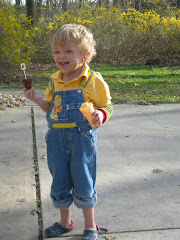

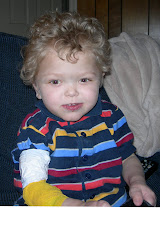

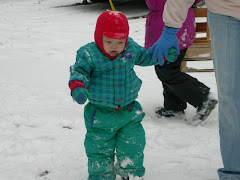

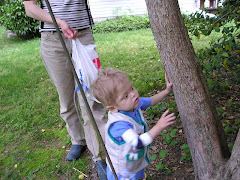
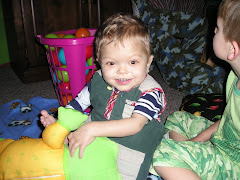
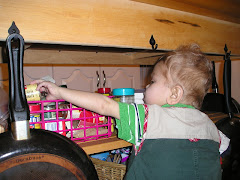
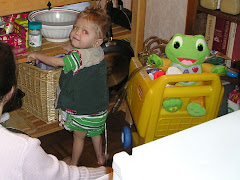
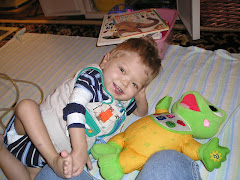
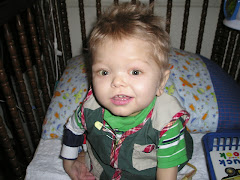
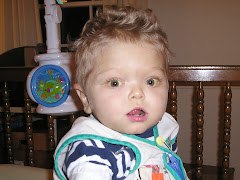
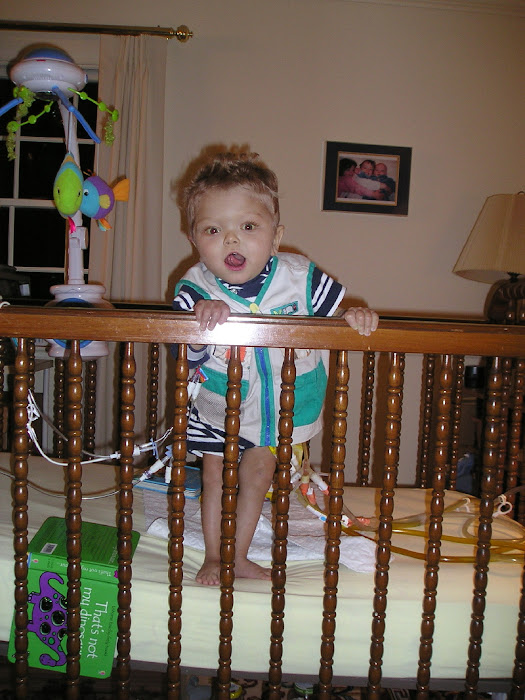
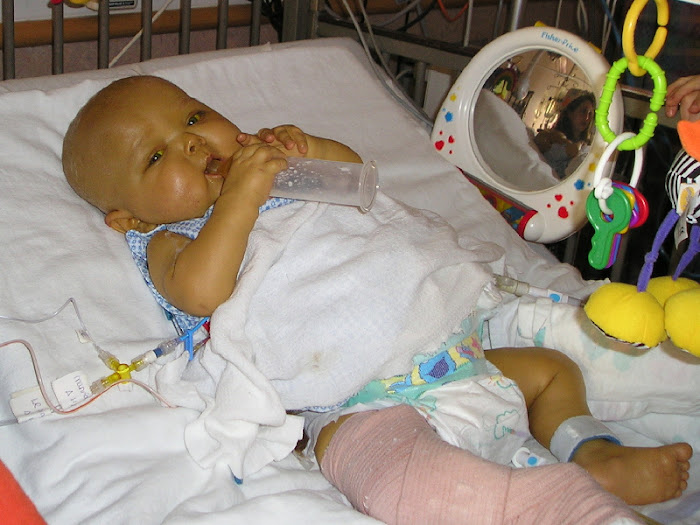
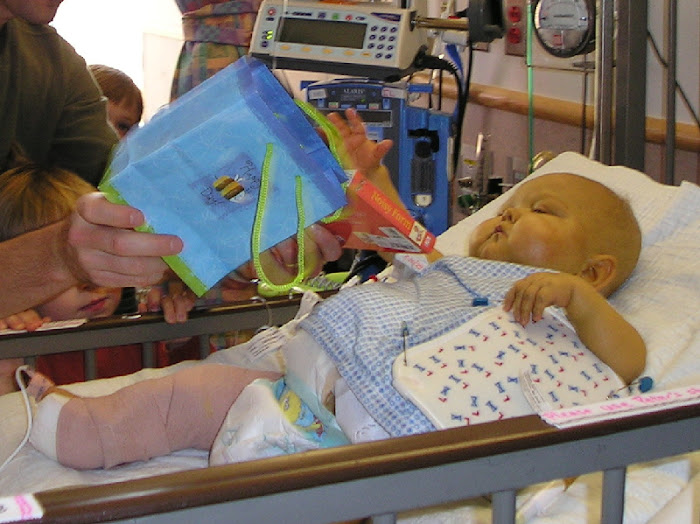
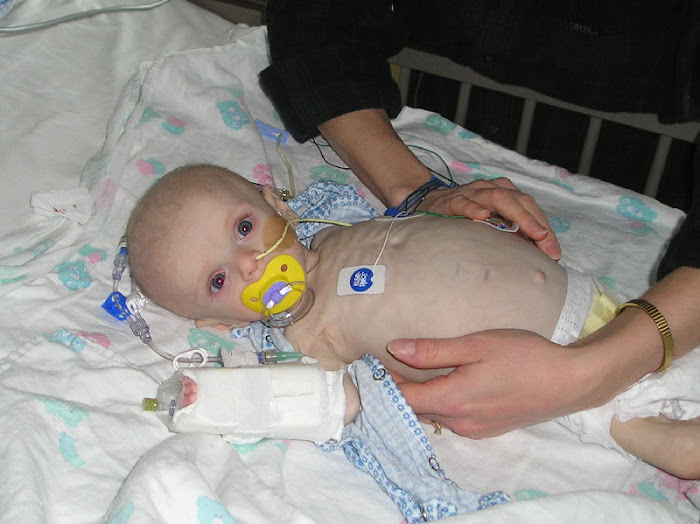
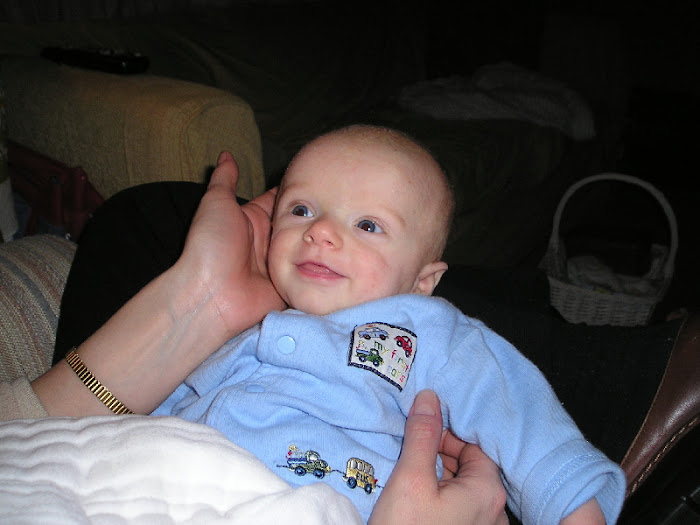
No comments:
Post a Comment